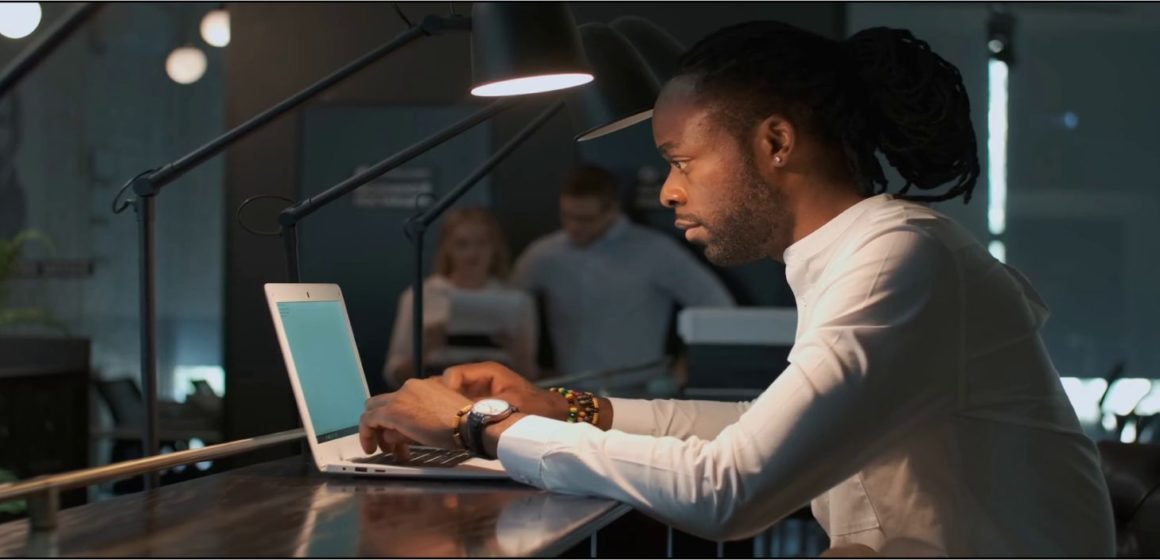COVID-19 is Facilitating a Rapid Change of Workplace
COVID-19 is facilitating the rapid change of the traditional workplace into a digital environment.
The economic research article published by Ekonomska Istrazivanja on Taylor & Francis online narrates their findings from the investigations conducted on the current status and future evolution of the workplace within the COVID-19 pandemic context. The analysis of the data collated from the research to find out more about the employees’ and organizations’ experience with remote working, the advantages and disadvantages of accessing the workplace during the pandemic, made possible the identification of patterns within the available literature regarding what has happened and, especially, its influence on the workplace.
The truth is that revolution initiated by COVID-19 has changed the way companies and employees work and will continue doing so, requiring a constant reinvention of how they operate and causing actions never seen before, generating deep changes in the workplace. Therefore, the idea of the workplace will never be what was expected before COVID-19, where reinvention of work, technology and safety are key points in its transformation process.
According to McKinsey (2020), the COVID-19 pandemic brought new ways of doing business requiring that organizations must change how they operate along with the role of offices in generating secure, successful and rewarding careers. Moreover, COVID-19 brought unparalleled challenges, where many companies around the world have demonstrated their ability to face the challenges, responding with pre-designed crisis management plans and creating new work conditions to protect workers within an unforeseen situation. Companies learnt from this situation, as they have recognized that remote working has been a key factor in the continuity of business, to explore new ways of carrying out the work as well as the new role of the office.
Exposing the weaknesses of businesses
COVID-19 exposed many weaknesses and issues that have been present in business for a long time, in particular how to carry out daily activities from physical to virtual interactions perspective. PricewaterhouseCoopers and BCG, stated that companies are able to identify which roles need to be carried out face to face or which of them do not, and to what extent. This process has become a mandatory action, where the best time to think about it and decide in an orderly manner is now, as depending on how it is organized, the workplace will inevitably evolve from basic on site towards face to face, remote or a combination of these (World Economic Forum,2020). For instance, under remote or hybrid scenarios, such as partially remote and partially on site, there may be advantages for both company and employees in the way the workplace is designed, as it can allow them to work from their home office or even a dedicated remote office close to employees’ homes, with fewer geographical constraints as compared to reaching the main headquarters office (Harvard Business Review).
Therefore, people will live where they prefer, sometimes at lower living costs or close to loved ones, which consequently will turn the workplace into a more attractive place to work. Assigning jobs to the different workplace models can help to determine which people can work locally or remotely. This can be an advantage for companies and employees, as it will allow employees to be more comfortable with their jobs and workplaces, and more motivated, resulting in greater productivity for companies (BCG, 2020, Diligent Insights, 2020).
Since the last century, numerous investigations have been carried out on organizations and organizational life, where important findings have been found in the field of business organization (Alvesson & Spicer, 2019). In general, it has been observed that rationality, in its pursuit of efficiency, has been accompanied by a gradual dehumanization of organizations (Ritzer, 2005) which threatens employees’ sense of identity and their relationships with others (Gill, 2019). On the other hand, it has been found that internal and external intangible capital influences the productivity of companies and, therefore, economic growth (Rico & Cabrer-Borrás, 2020). Now more than ever it is necessary to understand the factors and processes that make it possible for a workplace to be transformed from a dehumanized place into a nice place to work, that can give meaning to people’s work and turn around society (Michaelson et al., 2014) and, as part of companies’ policies, can improve talent management practices (Younas & Bari, 2020).
The COVID-19 Surprise
COVID-19 has taken everyone by surprise and the situation has changed radically since March 2020, leading to a serious rethinking of what the workplace currently is, and what it will be during and after COVID-19 (World Economic Forum, 2020b, 2020a). Initially, it seems that remote work, family reconciliation and flexible working schedules are determining the survival of the workplace during the pandemic period, however other variables such as engagement, passion at work, mindfulness, could also be considered relevant within this process as well as the COVID-19 context.
The analysis of the data collated by Ekonomska Istrazivanja during his research resulted in a process that led to a core category that showed how the workplace can be re-imagined, re-improved and re-invented, during and after the COVID-19 pandemic, where five different strategic categories, namely: Opportunity to Break with the past, Workplace redesign, Technology, Digital strategy, Remote working and new sense of workplace, was identified to achieve that target. The workplace under COVID-19 may be understood as a situation given by the new circumstances where the COVID-19 has triggered a general worldwide transformation affecting the workplace in particular. Initially, companies were not prepared to face a situation where employees had to leave their workplace and do their tasks remotely from other locations or from their own homes.
The identified strategic categories are essential to reach the new workplace while at the same time they feed back to each other in such a way that allows certain patterns of observation to be established regarding what could be the workplace of the future, completely different from what is known so far. The future workplace is neither what is known today, as it is considered as a transition period, nor what could have been under the previous non-COVID-19 conditions, as they will never be the same again. However, inevitably it will be more inclusive, more mature and novel, considering employees’ business needs and creating a good balance between them.
Effect of the lockdown
During the government-imposed lockdowns, companies inevitably adapted to continue working, assuring those main operations were done remotely. However, companies replicated what was done before the pandemic, by translating existing processes into remote working contexts. While in the past organizations were simply theorizing about new forms of work, the crisis of COVID-19 has forced them into taking actions, such as actually shifting to completely new ways of working, and even re-imagining new forms of work as required by the new pandemic circumstances. Therefore, companies must identify the most important processes within their organization, geography and functional structure, for their further re-evaluation involving both of management and employees.
This effort should re-imagine the existing career development paths proposed by Human Resources – such as promoting intrapersonal relationships with closest coworkers by requiring face-to-face office contact at the beginning while gradually shifting toward remote work – and the execution of different business activity processes or production stages, such as limiting face-to-face meetings for planning activities while working remotely for the actual execution. The use of automation will be one of the change opportunities for the workplace of the future. Jobs should be redefined according to the desired workplace considerations, such as performance or productivity, that will determine the level and type of automation, where the use of Artificial Intelligence and semi automation of repetitive and non-skilled work is the current reality.
However, the main future concern is going to be about shifting from currently established physical business activity to a virtual or hybrid approach with partial physical contact. This will mean rethinking the whole business process as this transition will inevitably involve a major use of automation where no workplace will be needed. Organizations must rethink their values and corporate culture so that they can be compatible with new ways of working, for instance: talent development must consider whether aspects such as face-to-face mentoring can be done in the same manner in the digital world. Similarly, the cultural values inherent in the company should be reconsidered. The temptation to return to pre-pandemic approaches should be avoided, preventing mistakes previously made. It is necessary to build the new processes for a digital world, educating and preparing the organization so that there are no differences between the processes related to face-to-face and remote work.
Finding New Ways of Working
New ways of working will force companies to redefine employees’ tasks and how they are performed, especially when working remotely. It will be necessary to reexamine organizations’ economic policies of reward and motivation, as well as to have an effective balance between the development of the career model and their productivity. Future jobs will not be the same as those of the past, leading to the need to rethink how performance is measured and, consequently, appraisals may not necessarily refer to the actual performance index but about the employee’s ability to overcome uncertainties, adapt to everchanging business scenarios and demonstrate leadership qualities. Therefore, breaking with the past, the first category to change the workplace must be engaged to succeed as an organization in this evolving future world of work. Organizations of any size should consider the present moment as their best opportunity to break the inertia of the past and eliminate old bad habits or outdated ways of doing things. This category implies that all organizations are able to imagine new ways of work, and how the workplace will be, either by their own means or by means of external consulting services.
To prepare for the new post-COVID-19 situation, it is important that companies redefine the actual way work is performed and located. Depending on the type of work and the requirements to perform it, it will be important to comprehend the models and dynamics necessary to develop tasks and workplaces according to their needs. Companies will have to align their people, processes and technologies as well as career policies, work models, and even contracts. Therefore, workplace redesign is a basic and prior category on the road to achieving the re-imagined, re-improved and re-invented workplace.
The Terraskills Digital Literacy Skills (DLS) training is an opportunity for employees, entrepreneurs, employers and business owners to upskill and reskill themselves with 21st Century technology skills pertinent for engaging new ways of working.




